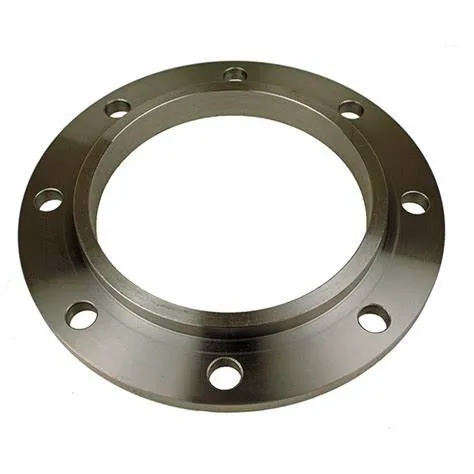-
Cangzhou Yulong Steel Co., Ltd.
-
Phone:
+86 13303177267 -
Email:
admin@ylsteelfittings.com
- English
- Arabic
- Italian
- Spanish
- Portuguese
- German
- kazakh
- Persian
- Greek
- French
- Russian
- Polish
- Thai
- Indonesian
- Vietnamese
- Zulu
- Korean
- Uzbek
- Hindi
- Serbian
- Malay
- Ukrainian
- Gujarati
- Haitian Creole
- hausa
- hawaiian
- Hebrew
- Miao
- Hungarian
- Icelandic
- igbo
- irish
- Japanese
- Javanese
- Kannada
- Khmer
- Rwandese
- Afrikaans
- Albanian
- Amharic
- Armenian
- Azerbaijani
- Basque
- Belarusian
- Bengali
- Bosnian
- Bulgarian
- Catalan
- Cebuano
- China
- China (Taiwan)
- Corsican
- Croatian
- Czech
- Danish
- Esperanto
- Estonian
- Finnish
- Frisian
- Galician
- Georgian
- Kurdish
- Kyrgyz
- Lao
- Latin
- Latvian
- Lithuanian
- Luxembourgish
- Macedonian
- Malgashi
- Malayalam
- Maltese
- Maori
- Marathi
- Mongolian
- Myanmar
- Nepali
- Norwegian
- Norwegian
- Occitan
- Pashto
- Dutch
- Punjabi
- Romanian
- Samoan
- Scottish Gaelic
- Sesotho
- Shona
- Sindhi
- Sinhala
- Slovak
- Slovenian
- Somali
- Sundanese
- Swahili
- Swedish
- Tagalog
- Tajik
- Tamil
- Tatar
- Telugu
- Turkish
- Turkmen
- Urdu
- Uighur
- Welsh
- Bantu
- Yiddish
- Yoruba

Aug . 20, 2024 02:51 Back to list
Understanding the Applications and Benefits of 8 Blind Flanges in Piping Systems
Understanding the 8% Blind Flange An Essential Component in Industrial Applications
In the world of industrial piping and construction, the significance of various components cannot be overstated. One such vital component is the blind flange, commonly referred to in specifications as the 8% blind flange. This particular type of flange plays a critical role in the maintenance and functioning of piping systems, and understanding its features, applications, and specifications is important for engineers and technicians alike.
What is a Blind Flange?
A blind flange is a flat disk used to seal the end of a piping system. Unlike other types of flanges, which may connect two pipes or components, blind flanges do not have a central hole. Instead, they serve the purpose of closing off the end of a piping run or vessel, effectively stopping the flow of fluid or gas. The 8% specification often refers to certain pressure ratings, dimensions, or material characteristics associated with these flanges, highlighting their specific engineering standards.
Features and Specifications
The 8% designation could imply several things, including a specific pressure rating or a particular standard in manufacturing. Typically, blinds flanges are manufactured according to various standards such as ANSI, ASME, or API, ensuring uniformity in dimensions, bolt patterns, and pressure ratings. A solid understanding of these specifications is crucial for engineers when designing a piping system.
Materials used for blind flanges can vary widely based on application requirements. Common materials include carbon steel, stainless steel, alloy steel, and high-performance plastics. Each material is selected based on factors such as temperature, pressure, and the nature of the fluid being contained. For instance, stainless steel flanges are often used in corrosive environments due to their resistance to oxidation and corrosion.
8 blind flange

Applications Across Industries
Blind flanges find applications in various industries, including oil and gas, chemical processing, water treatment, and power generation. In the oil and gas sector, blind flanges are essential for isolating sections of pipelines for maintenance or emergencies. They ensure that hazardous fluids do not leak and that workers can safely conduct repairs.
In chemical processing, blind flanges are similarly crucial. They provide a way to secure systems under high pressure and extreme temperatures, ensuring the integrity of the system and preventing spills, which could lead to environmental disasters. Moreover, in water treatment facilities, these flanges can be used to isolate tanks and valves for maintenance work without shutting down the entire system.
Installation and Maintenance
Installing a blind flange requires careful consideration and adherence to relevant standards. Proper alignment with the piping system is essential, and the use of gaskets, bolts, and torque specifications must be followed to ensure a leak-proof joint. Routine inspections and maintenance should be conducted to check for signs of wear and tear, especially in high-pressure applications.
Conclusion
Overall, the 8% blind flange is an indispensable element in many industrial systems. Understanding its features, specifications, and applications enables engineers and technicians to make informed decisions when designing and maintaining piping systems. Its ability to provide a robust seal and isolate piping sections makes it a crucial tool in ensuring safety and efficiency in various industrial processes. As technology advances and new materials are developed, the role of blind flanges will continue to evolve, maintaining their importance in contemporary engineering practices.
Latest news
-
ANSI 150P SS304 SO FLANGE
NewsFeb.14,2025
-
ASTM A333GR6 STEEL PIPE
NewsJan.20,2025
-
ANSI B16.5 WELDING NECK FLANGE
NewsJan.15,2026
-
ANSI B16.5 SLIP-ON FLANGE
NewsApr.19,2024
-
SABS 1123 FLANGE
NewsJan.15,2025
-
DIN86044 PLATE FLANGE
NewsApr.19,2024
-
DIN2527 BLIND FLANGE
NewsApr.12,2024
-
JIS B2311 Butt-Welding Fittings LR/SR 45°/90° /180°Seamless/Weld
NewsApr.23,2024











